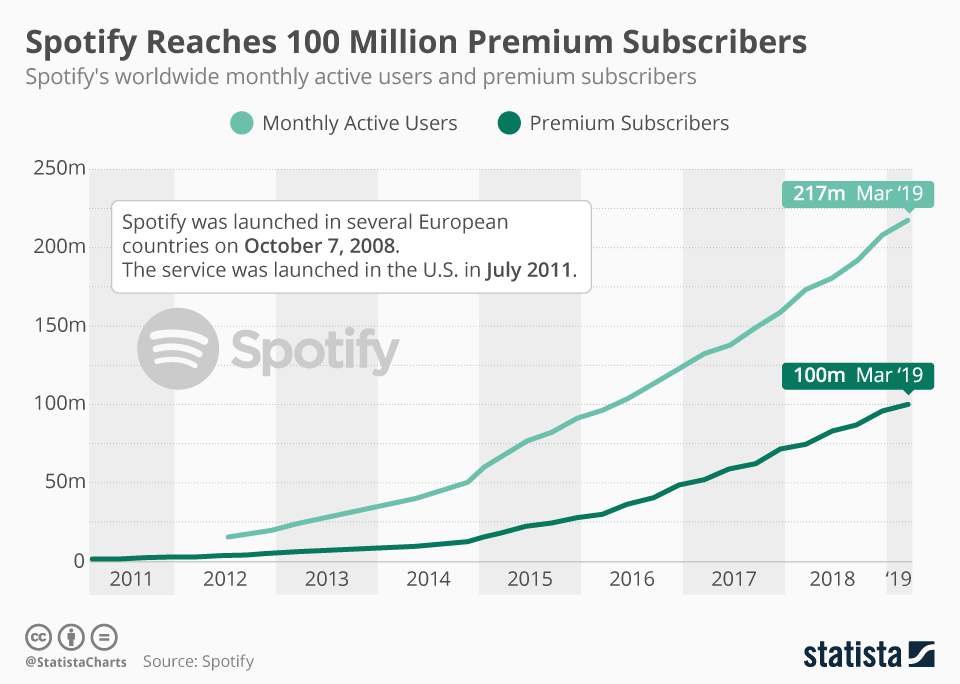Once you think of spending your advertising and marketing dollars, Spotify probably doesn’t come foremost in your mind. And yet, you may need considered radio, a very traditional marketing medium. You might even think about spending a few of your online marketing dollars on YouTube. Here in this post, we show you a complete guide to advertise on Spotify.
While many people still listen to music on traditional radio stations and music videos are amongst the most popular kind of content on YouTube, Spotify is rapidly turning into the favored way to listen to your music. Therefore it makes sense to devote a few of your marketing to Spotify.
By the end of 2019, Spotify has become the most common global audio streaming subscription service with 271m users, including 124m subscribers, across 79 markets. They claim they are the most important driver of revenue to the music business at present.
Fortunately for marketers, Spotify has recognized its potential for marketing success and now has a well-organized advertising market.
Advertising on Spotify Offers Great Potential
In some ways, you’ll be able to look at Spotify as being two products. On the one hand, you get the free ad-supported Spotify product. The keenest Spotify users, however, upgrade to Spotify Premium, which doesn’t include ads. Spotify very a lot follows the classic freemium model.
However, regardless of there being a little opportunity to advertise on Spotify Premium, there are now vast numbers of people using the free version of the app. According to Spotify’s Q4 2019 Annual Report, Spotify has 271 million annual users every month (MAU). This is up from 207 million the past year. Over the 2019 year, premium subscribers gained from 96 million to 124 million. There must be some overlap because the report also states that they had 153 million monthly users as of Q4 2019, up from 116 million in Q4 2018.
Source: Statista
Another method to look at the importance of advertising on Spotify is to look at their financials for Q4 2019. The majority of their revenue comes from Premium subscriptions (€1,638 million). The €217 million Spotify got from advertising is still a sizable amount. Perhaps more importantly, advertising revenue jumped 27% from the previous quarter, compared to a smaller 5% rise in revenue from Premium subscribers.
Spotify is clearly passionate about the future success of its platform. “We’re enthusiastic about the underlying trends in the business. From the history, we all know that MAU growth tends to be a leading indicator of future subscriber additions, which is then followed by revenue gains in both premium and ad-supported users.”
Spotify’s greatest strength is its enormous reach. It is, no doubt, the world’s number one audio streaming platform nowadays. And don’t underestimate the power of audio streaming. Streaming accounts for 62% of the world’s music sales now. And that’s just the Premium subscribers – the people who stream music for free (and thus need to listen or watch ads) don’t even factor into the equation.
Why Advertise on Spotify?
Just like Facebook and Instagram, Spotify also has a formal advertising marketplace. This makes advertising on Spotify an easy process. They opened Spotify Ad Studio in 2017 to streamline the advertising process and provide a variety of options to potential advertisers.
As a result of most people are now used to the freemium model, Spotify’s free users are expecting ads with their listening. Those that actively hate advertisements willingly pay for a subscription to the Premium service. This leaves people who accept that they will hear ads as the “price” of listening to their favorite music streaming for free.
Spotify has one advantage over many apps. Most people will, at some time, have listened to the radio, where they hear ads among the songs. They are already used to hear ad-supported music. Spotify is one level higher than the radio, however. You’ll be able to create your own playlist and aren’t reliant on the whims of some program director.


